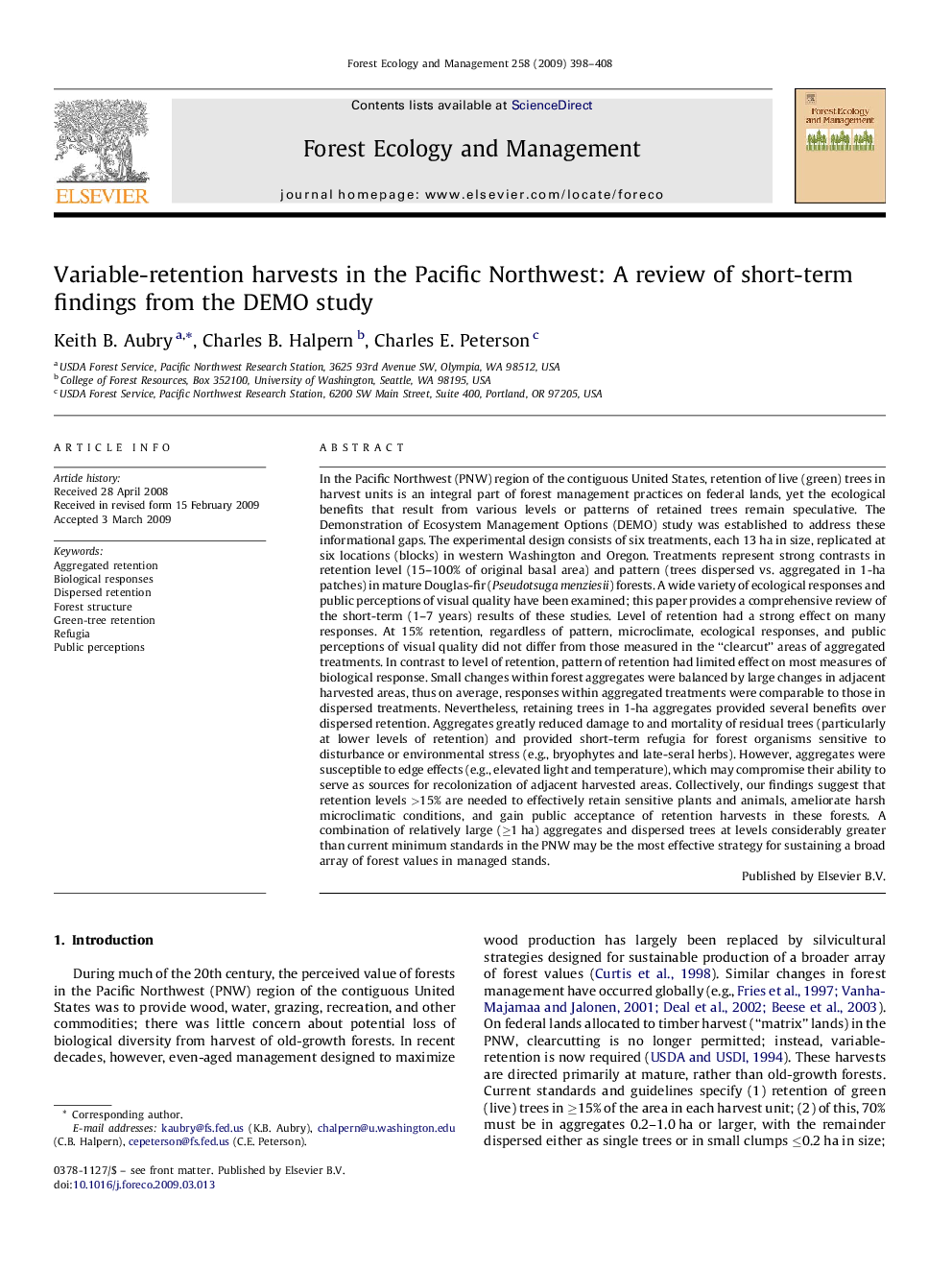| کد مقاله | کد نشریه | سال انتشار | مقاله انگلیسی | نسخه تمام متن |
|---|---|---|---|---|
| 88651 | 159313 | 2009 | 11 صفحه PDF | دانلود رایگان |

In the Pacific Northwest (PNW) region of the contiguous United States, retention of live (green) trees in harvest units is an integral part of forest management practices on federal lands, yet the ecological benefits that result from various levels or patterns of retained trees remain speculative. The Demonstration of Ecosystem Management Options (DEMO) study was established to address these informational gaps. The experimental design consists of six treatments, each 13 ha in size, replicated at six locations (blocks) in western Washington and Oregon. Treatments represent strong contrasts in retention level (15–100% of original basal area) and pattern (trees dispersed vs. aggregated in 1-ha patches) in mature Douglas-fir (Pseudotsuga menziesii) forests. A wide variety of ecological responses and public perceptions of visual quality have been examined; this paper provides a comprehensive review of the short-term (1–7 years) results of these studies. Level of retention had a strong effect on many responses. At 15% retention, regardless of pattern, microclimate, ecological responses, and public perceptions of visual quality did not differ from those measured in the “clearcut” areas of aggregated treatments. In contrast to level of retention, pattern of retention had limited effect on most measures of biological response. Small changes within forest aggregates were balanced by large changes in adjacent harvested areas, thus on average, responses within aggregated treatments were comparable to those in dispersed treatments. Nevertheless, retaining trees in 1-ha aggregates provided several benefits over dispersed retention. Aggregates greatly reduced damage to and mortality of residual trees (particularly at lower levels of retention) and provided short-term refugia for forest organisms sensitive to disturbance or environmental stress (e.g., bryophytes and late-seral herbs). However, aggregates were susceptible to edge effects (e.g., elevated light and temperature), which may compromise their ability to serve as sources for recolonization of adjacent harvested areas. Collectively, our findings suggest that retention levels >15% are needed to effectively retain sensitive plants and animals, ameliorate harsh microclimatic conditions, and gain public acceptance of retention harvests in these forests. A combination of relatively large (≥1 ha) aggregates and dispersed trees at levels considerably greater than current minimum standards in the PNW may be the most effective strategy for sustaining a broad array of forest values in managed stands.
Journal: Forest Ecology and Management - Volume 258, Issue 4, 30 July 2009, Pages 398–408